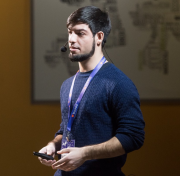
Best Practices and Practical Nuances when working with Postgres using Go
In my talk I'll tell you about practices of working with Postgres in the Go-services. I’ll describe general advantages and disadvantages of the basic tools that are commonly used when working with Postgres using Go. Of course, we will touch on the nuances that need to be taken into account when your services are running inside the Kubernetes. I will also talk about Avito’s experience in providing a database of product’s developers. This presentation will be of interest to developers who want to avoid problems when working with Postgres, and will be useful to DBA who want to know what difficulties customers face in their database.